Related Research Articles

Sir Isaac Newton was an English polymath active as a mathematician, physicist, astronomer, alchemist, theologian, and author who was described in his time as a natural philosopher. He was a key figure in the Scientific Revolution and the Enlightenment that followed. His pioneering book Philosophiæ Naturalis Principia Mathematica, first published in 1687, consolidated many previous results and established classical mechanics. Newton also made seminal contributions to optics, and shares credit with German mathematician Gottfried Wilhelm Leibniz for developing infinitesimal calculus, though he developed calculus years before Leibniz.
Inertia is the tendency of objects in motion to stay in motion and objects at rest to stay at rest, unless a force causes its speed or direction to change. It is one of the fundamental principles in classical physics, and described by Isaac Newton in his first law of motion. It is one of the primary manifestations of mass, one of the core quantitative properties of physical systems. Newton writes:
LAW I. Every object perseveres in its state of rest, or of uniform motion in a right line, except insofar as it is compelled to change that state by forces impressed thereon.

1665 (MDCLXV) was a common year starting on Thursday of the Gregorian calendar and a common year starting on Sunday of the Julian calendar, the 1665th year of the Common Era (CE) and Anno Domini (AD) designations, the 665th year of the 2nd millennium, the 65th year of the 17th century, and the 6th year of the 1660s decade. As of the start of 1665, the Gregorian calendar was 10 days ahead of the Julian calendar, which remained in localized use until 1923.

John Flamsteed was an English astronomer and the first Astronomer Royal. His main achievements were the preparation of a 3,000-star catalogue, Catalogus Britannicus, and a star atlas called Atlas Coelestis, both published posthumously. He also made the first recorded observations of Uranus, although he mistakenly catalogued it as a star, and he laid the foundation stone for the Royal Greenwich Observatory.
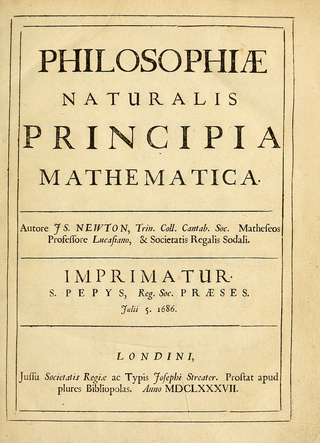
Philosophiæ Naturalis Principia Mathematica often referred to as simply the Principia, is a book by Isaac Newton that expounds Newton's laws of motion and his law of universal gravitation. The Principia is written in Latin and comprises three volumes, and was authorized, imprimatur, by Samuel Pepys, then-President of the Royal Society on 5 July 1686 and first published in 1687.
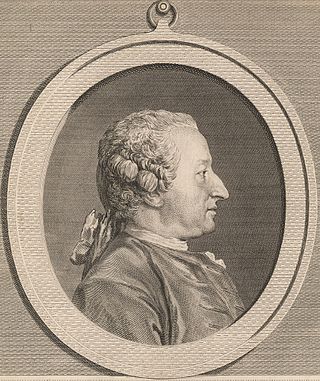
Alexis Claude Clairaut was a French mathematician, astronomer, and geophysicist. He was a prominent Newtonian whose work helped to establish the validity of the principles and results that Sir Isaac Newton had outlined in the Principia of 1687. Clairaut was one of the key figures in the expedition to Lapland that helped to confirm Newton's theory for the figure of the Earth. In that context, Clairaut worked out a mathematical result now known as "Clairaut's theorem". He also tackled the gravitational three-body problem, being the first to obtain a satisfactory result for the apsidal precession of the Moon's orbit. In mathematics he is also credited with Clairaut's equation and Clairaut's relation.
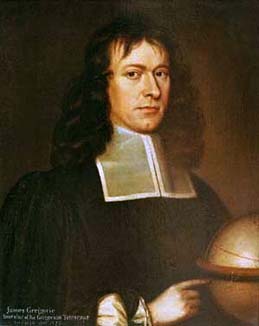
James Gregory was a Scottish mathematician and astronomer. His surname is sometimes spelt as Gregorie, the original Scottish spelling. He described an early practical design for the reflecting telescope – the Gregorian telescope – and made advances in trigonometry, discovering infinite series representations for several trigonometric functions.
Stephen Gray was an English dyer and astronomer who was the first to systematically experiment with electrical conduction. Until his work in 1729 the emphasis had been on the simple generation of static charges and investigations of the static phenomena. Gray showed that electricity can be conducted through metals and that it appeared on the surfaces of insulators.
The year 1749 in science and technology involved some significant events.
The year 1746 in science and technology involved some significant events.
The year 1758 in science and technology involved some significant events.

Pierre Bouguer was a French mathematician, geophysicist, geodesist, and astronomer. He is also known as "the father of naval architecture".

Charles Marie de La Condamine was a French explorer, geographer, and mathematician. He spent ten years in territory which is now Ecuador, measuring the length of a degree of latitude at the equator and preparing the first map of the Amazon region based on astro-geodetic observations. Furthermore he was a contributor to the Encyclopédie.
The year 1702 in science and technology involved some significant events.
The year 1689 in science and technology involved some significant events.

Mark Catesby was an English naturalist who studied the flora and fauna of the New World. Between 1729 and 1747, Catesby published his Natural History of Carolina, Florida and the Bahama Islands, the first published account of the flora and fauna of North America. It included 220 plates of birds, reptiles, amphibians, fish, insects, mammals and plants.
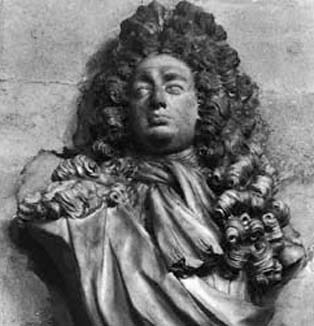
David Gregory FRS was a Scottish mathematician and astronomer. He was professor of mathematics at the University of Edinburgh, and later Savilian Professor of Astronomy at the University of Oxford, and a proponent of Isaac Newton's Principia.

In the history of calculus, the calculus controversy was an argument between the mathematicians Isaac Newton and Gottfried Wilhelm Leibniz over who had first invented calculus. The question was a major intellectual controversy, which began simmering in 1699 and broke out in full force in 1711. Leibniz had published his work first, but Newton's supporters accused Leibniz of plagiarizing Newton's unpublished ideas. Leibniz died in 1716, shortly after the Royal Society, of which Newton was a member, found in Newton's favor. The modern consensus is that the two men developed their ideas independently.
The General Scholium is an essay written by Isaac Newton, appended to his work of Philosophiæ Naturalis Principia Mathematica, known as the Principia. It was first published with the second (1713) edition of the Principia and reappeared with some additions and modifications on the third (1726) edition. It is best known for the "Hypotheses non fingo" expression, which Newton used as a response to some of the criticism received after the release of the first edition (1687). In the essay Newton not only counters the natural philosophy of René Descartes and Gottfried Leibniz, but also addresses issues of scientific methodology, theology, and metaphysics.
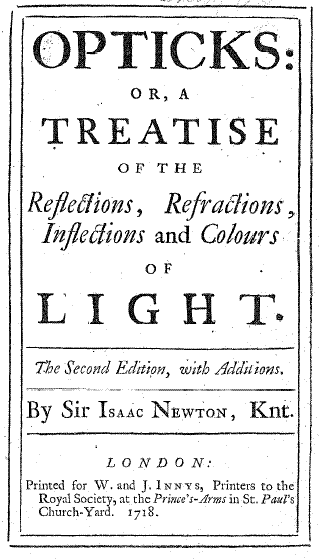
Newtonianism is a philosophical and scientific doctrine inspired by the beliefs and methods of natural philosopher Isaac Newton. While Newton's influential contributions were primarily in physics and mathematics, his broad conception of the universe as being governed by rational and understandable laws laid the foundation for many strands of Enlightenment thought. Newtonianism became an influential intellectual program that applied Newton's principles in many avenues of inquiry, laying the groundwork for modern science, in addition to influencing philosophy, political thought and theology.
References
- ↑ Date clarified in: Sarton, George (November 1931). "Discovery of the Aberration of Light". Isis . 16 (2): 233–265. doi:10.1086/346611. ISSN 0021-1753. JSTOR 224710.
- ↑ Hepper, F. Nigel (2004). "Catesby, Mark (1683–1749)". Oxford Dictionary of National Biography . Oxford University Press. Retrieved 2011-03-23.(subscription or UK public library membership required)
- ↑ Steinbock, R. Ted (2006). "Isaac Newton and the Scientific Revolution" (PDF). Centre College. Archived from the original (PDF) on 2006-09-19.
- ↑ Westfall, Richard S. "Gray, Stephen". The Galileo Project.
- ↑ Lamontagne, Roland (1964). La vie et l'oeuvre de Pierre Bouguer. Presses de l'Université de Montréal.
- ↑ "Appendix 8: Chocolate Timeline". Chocolate. John Wiley & Sons, Ltd. 2008. pp. 855–928. doi:10.1002/9780470411315.app8. ISBN 978-0-470-41131-5.